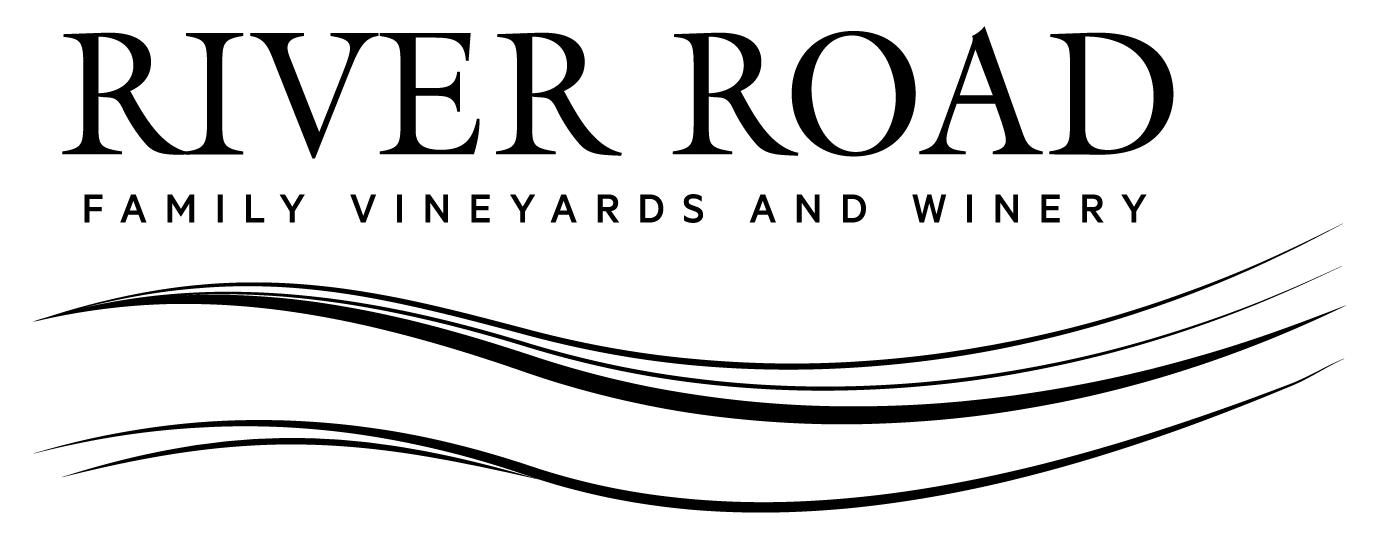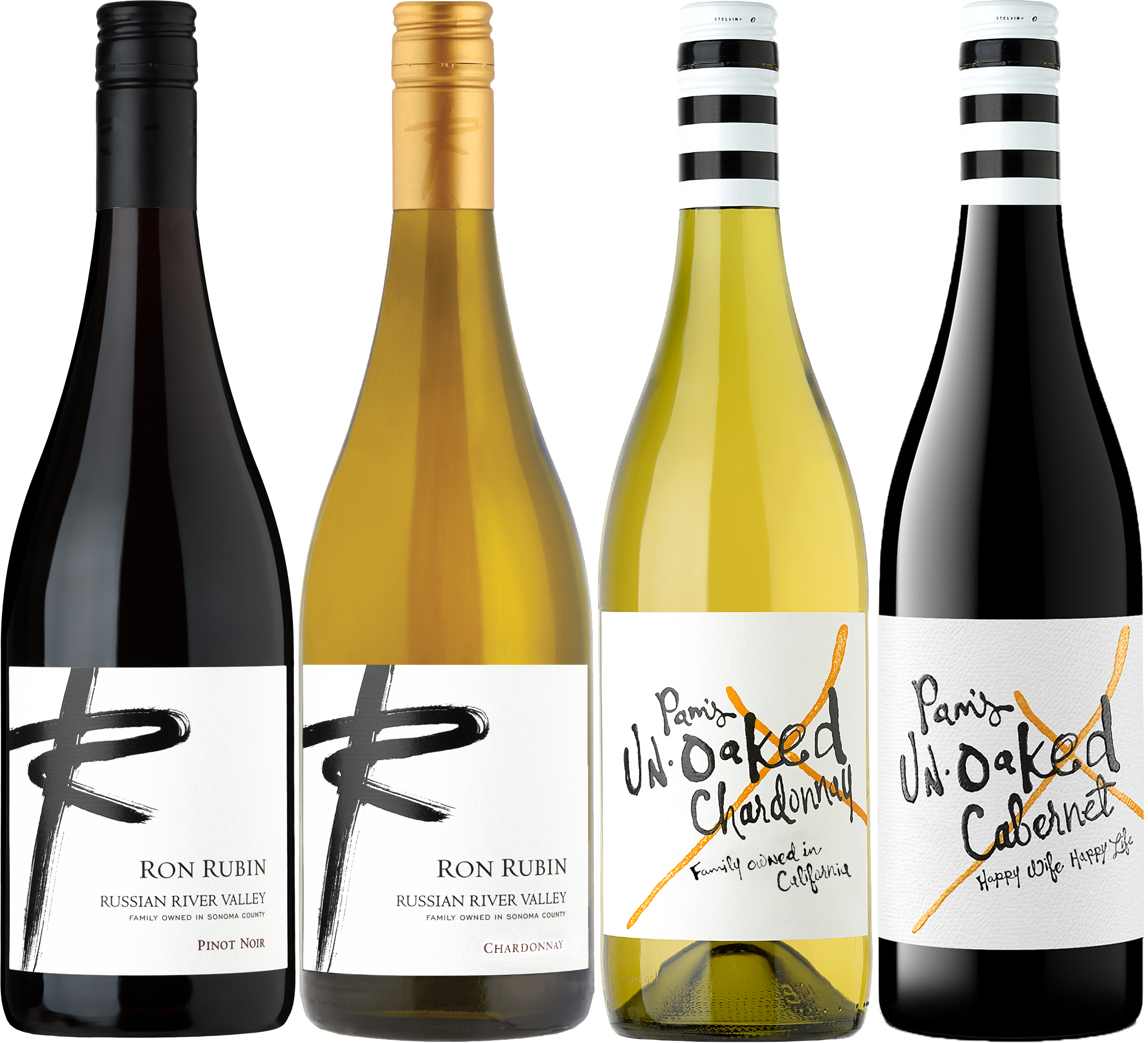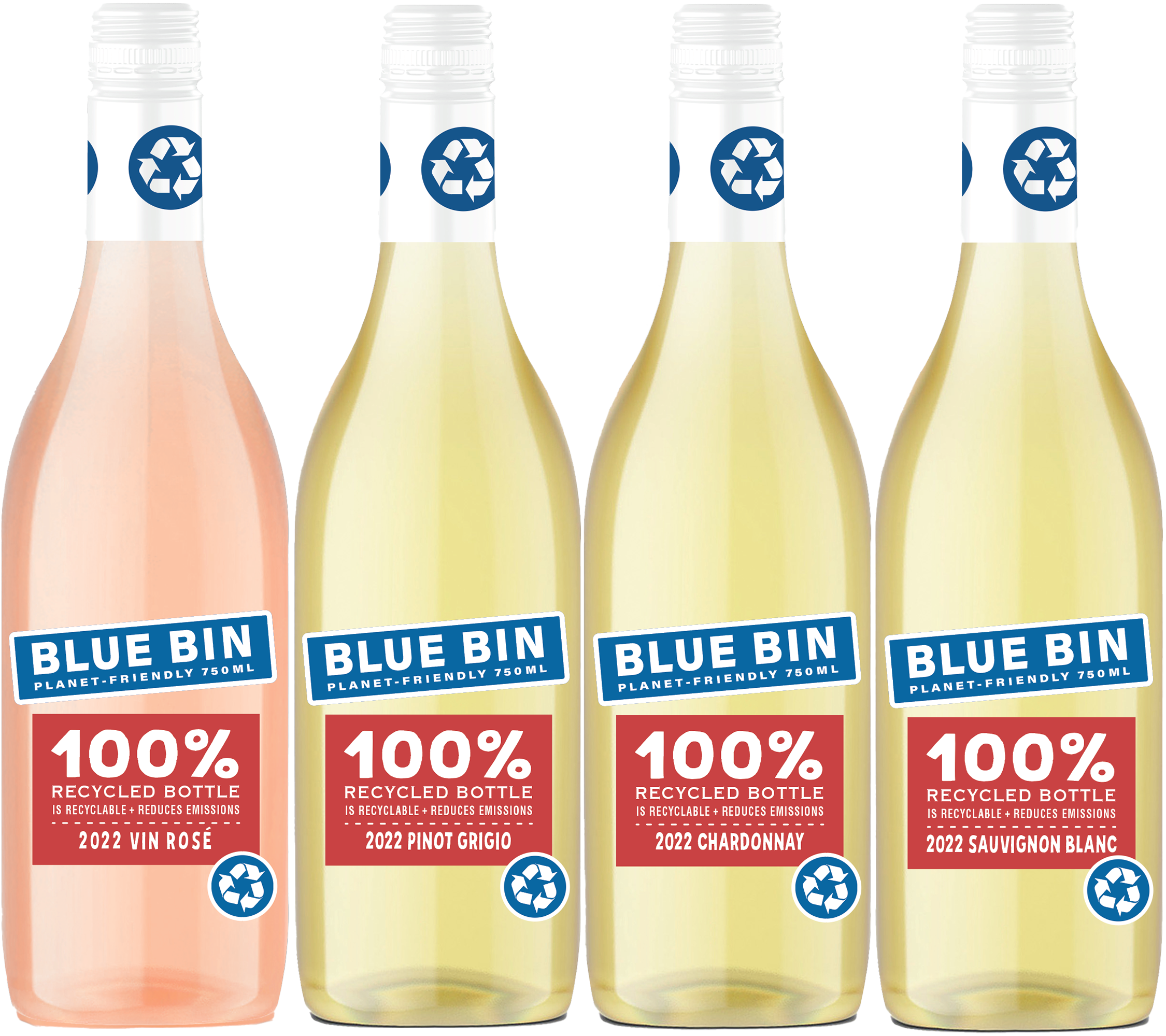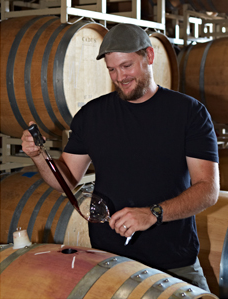 Hi! I’m Ed Morris, associate winemaker and resident cooper for Ron Rubin Winery, in Green Valley of the Russian River Valley, and this is “All Things OAK.” From time to time, I share what’s happening at Ron Rubin Winery. Being at work involves so much more than winemaking and using my cooperage skills. I’m in the wine cellar, on the crush pad, in my office, the lab, and occasionally meeting with cooperage representatives to gather more insights, in order to make great barrel decisions. My job, like winemaker Joe Freeman’s, changes according to the needs of that month. This journal gives you a snapshot of what it’s like to be the associate winemakers and resident cooper for an artisan, family winery, and vineyards.
Hi! I’m Ed Morris, associate winemaker and resident cooper for Ron Rubin Winery, in Green Valley of the Russian River Valley, and this is “All Things OAK.” From time to time, I share what’s happening at Ron Rubin Winery. Being at work involves so much more than winemaking and using my cooperage skills. I’m in the wine cellar, on the crush pad, in my office, the lab, and occasionally meeting with cooperage representatives to gather more insights, in order to make great barrel decisions. My job, like winemaker Joe Freeman’s, changes according to the needs of that month. This journal gives you a snapshot of what it’s like to be the associate winemakers and resident cooper for an artisan, family winery, and vineyards.
CALM IN THE CELLAR

With the bustling activities of Harvest 2017 finally behind us, we have calm in the cellar. While all our Pinot Noirs and Chardonnays are in the barrel, we still had some more barrels to fill. Our Old Vine Boschetti Zinfandel and our Alexander Valley Cabernet were also put into barrels in November. The 2017 wines in barrels are tasting awesome! They were all going through malolactic fermentation, which required that I pay close attention.
- A primer, for Malolactic fermentation, makes understanding it as easy as ABC
- Acid (Malic) + Bacteria (Yeast) = Cream (Lactic acid, the same acid found in cream.)
- We sampled all the barrels every two weeks to monitor progress until it’s complete. We have over 500 barrels in our wine cellar. That’s a lot of barrels to sample!
FILLING BARRELS
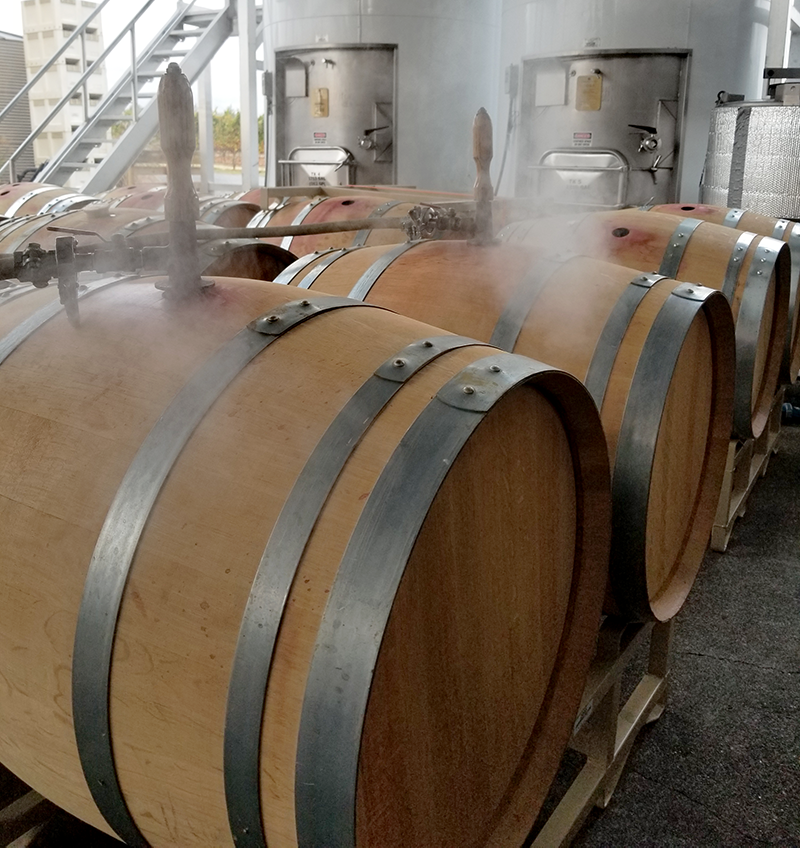
Making wine is cyclical. In our case, we empty most of our barrels prior to harvest and refill them with the new vintage. That means there’s a time when the barrels are empty, for a four to six-week period. This creates some challenges for us.
- When barrels sit empty, they dry out, causing the wood to shrink.
- This can cause leaks and a potential for spoilage bugs to get inside the barrels.
Both circumstances can’t be allowed to happen and need to be addressed before being filled. We use steam to combat both problems because it eliminates the need to use chemicals, drastically reducing water usage. It’s the eco-friendliest technique that we use, to keep our barrels clean and hydrated. Once the barrels are clean and tight, we go ahead and fill them again. During the first few months of aging, we use a special stopper, called a “fermentation bung,” to seal the barrel. It’s made of silicone and is designed to allow the CO2 gas to escape from the barrels. If we sealed them with solid bungs, the pressure would build up, and we’d have barrel “bungs” popping out all over the place!
FIXING BARRELS
Every year, it seems inevitable that we have a few, brand-new barrels that leak. Most of the time it’s because they’ve dried out, on their journey to the winery. A quick steaming usually swells the wood and takes care of that. Sometimes the leak is a little more serious. Coopers will test the finished barrels, before shipping them. They’ll put about three gallons of water in them, and pump compressed air inside. This pressurization will point out any potential leaks, most of the time. Sometimes we find that it takes time for a leak to develop, and the cause is wine seeping through the grain of the oak. Oak grain has hollow tubes going up the length of the tree, similar to blood vessels in a human body. Sap flows up and down these tubes. American oak has a higher content of tylose in these tubes than French oak has. (Tylose is a cellular structure used to transport nutrients up and down the tubes.) This extra “clotting” agent in American oak allows it to be mechanically sawn into quarters, then into staves, without risk of “grain leaks.” By comparison, French oak has little tylose in its grain structure and must be split by hand, so the grain follows the length of the stave. If there is one end of the tube on the inside of the barrel, with the other end leading to the outside of the barrel, we have a leak.
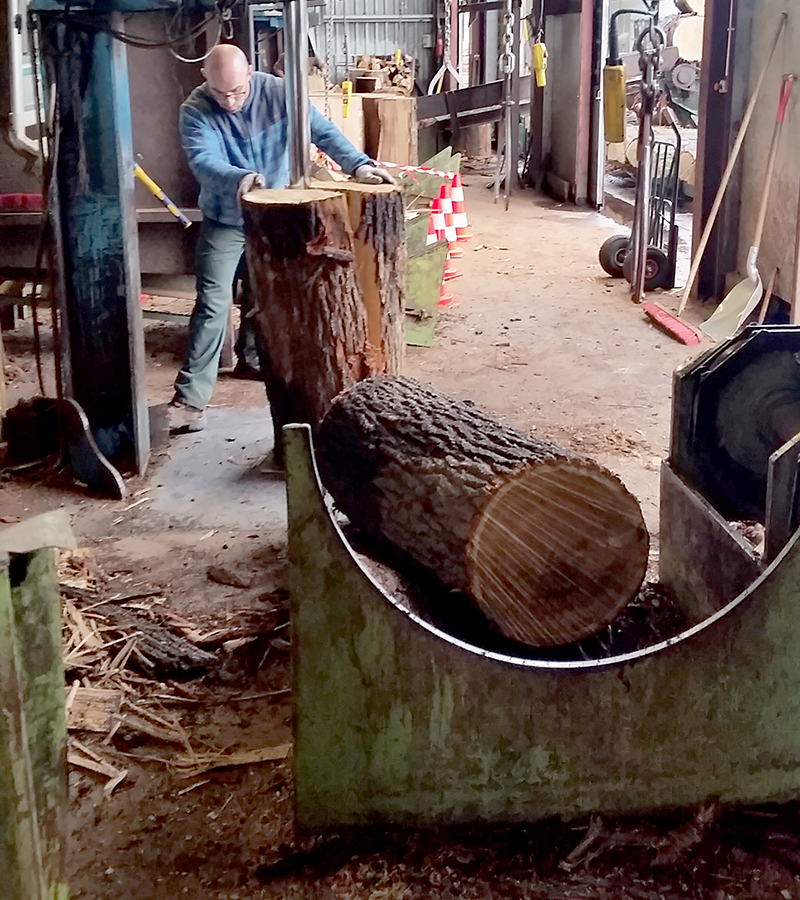
The need to hand split results in a poor yield of staves per log (about half of the yield of American oak), and increases the chance of “grain leaks.” Fixing a grain leak requires that I locate the direction in which way the wine is traveling. It’s a simple process to do this. I tap on either side of the leak, with a small hammer. I look for bubbles coming out of the point of the leak. My hammer taps force the air from the grain. Once the direction is determined, I hammer a sharp chisel into the wood. Then, I replace it with an oak wedge, which effectively creates a blockage (or a dam), to cut off the flow of wine through the grain. If a technique isn’t good enough, a cooper can make the leak worse, leading to the whole stave, or head board, needing to be replaced. Thankfully, my coopering skills are still sharp and we got the three barrels, with grain leaks, fixed this year!
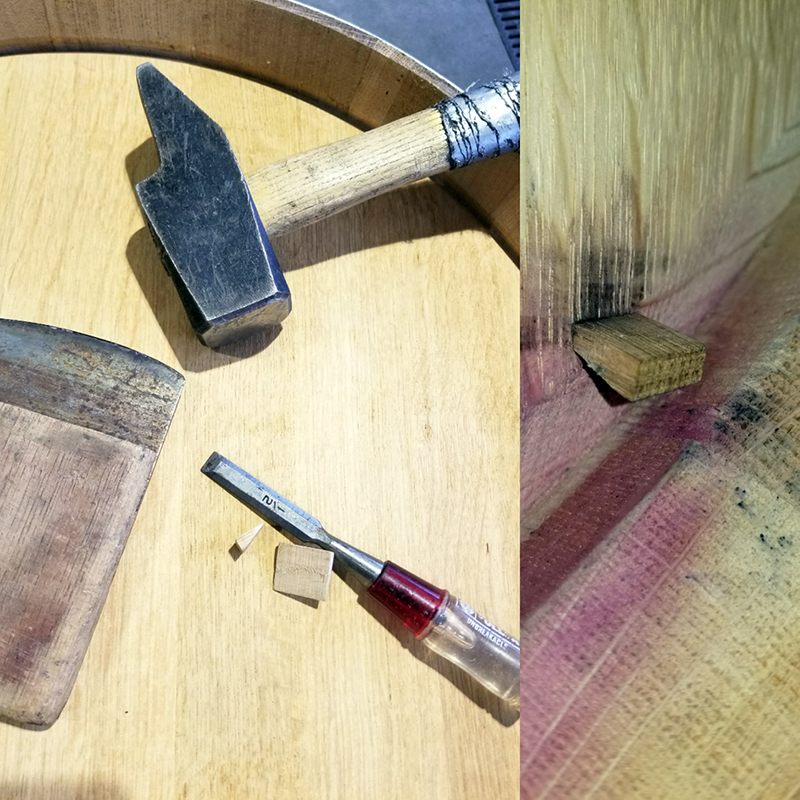
On behalf of all us here at Ron Rubin Winery, we’d like to wish all of you a Beautiful Holiday Experience, filled with happy loved ones, delicious foods, and great wines!
Cheers!

